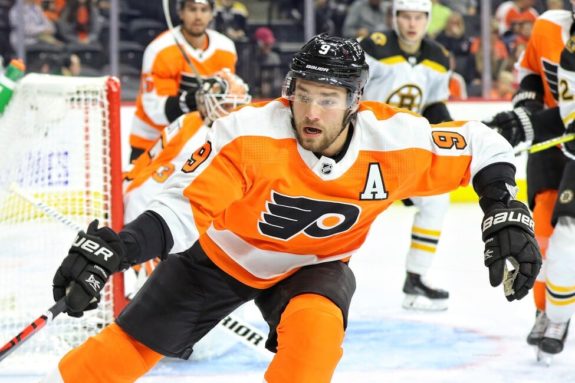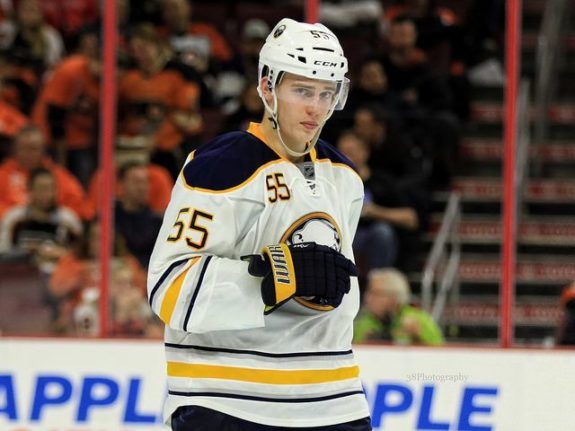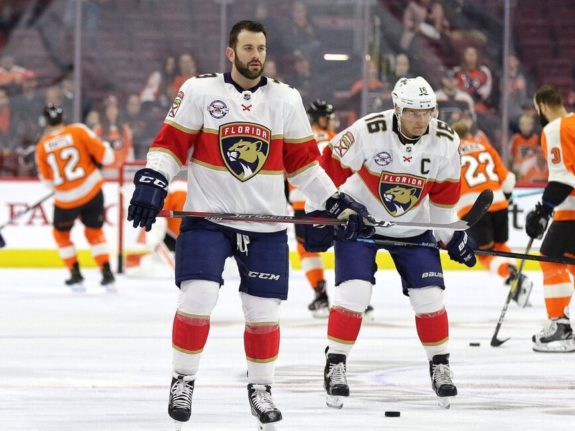The Philadelphia Flyers will begin training camp on Sept. 23, coming off a season in which they limped to a disappointing sixth-place finish in the East Division. Their defensemen never found the right chemistry as a unit last season. It was a key reason that the team allowed more goals than any other team in the NHL. General manager Chuck Fletcher addressed the deficiencies with the additions of Ryan Ellis, Rasmus Ristolainen, and Keith Yandle to play on the back end with hopes that a new infusion of talent can help Ivan Provorov and Travis Sanheim rebound from down seasons.
Lineup decisions will be a challenge for head coach Alain Vigneault, especially early in the season with so many new faces. Fletcher did make the additions to the blue line in part based on the need for defensive partners to complement each other with comparable skill sets and as right-handed and left-handed shots, which will help slot them more simply than the forwards. Ahead of training camp, health is assumed in lineup projections.
Top Pair: Ivan Provorov, Ryan Ellis
Despite winning his third Barry Ashbee Trophy as the team’s best defenseman, Provorov underwhelmed for the Flyers in 2020-21. He failed to prove that he could carry a top defensive pairing, and his revolving door of partners prevented him from finding a good rhythm at any point during the season. He still led Flyers defensemen in points, shots, blocked shots, ice time, and shorthanded ice time.

The addition of Ellis fills the need for a high-caliber, right-handed defenseman to play top-pair minutes, a role that Matt Niskanen served during the 2019-20 season before his abrupt retirement. The addition of an experienced, accomplished blueliner like Ellis will stabilize the back end in a way that seemed elusive last season.
Ellis will be expected to contribute with significant ice time on both special team units. Provorov will certainly be used on the penalty kill, but it remains to be seen whether or not he will continue to play with the man advantage considering the unit features five defensemen who bring notable experience on the power play.
Second Pair: Travis Sanheim, Rasmus Ristolainen
The projected second pair contains two of the more polarizing players based on the opinions of the fan base. Sanheim, a lefty, brings good size at 6-foot-3, but he has never utilized his size with a strong physical presence. The 25-year-old former first-round pick finished last season as a minus-22. His analytical stats suggest that the number was inflated by inconsistent goaltending and by the struggles of his former partner Philippe Myers, who was included in the package to acquire Ellis.
Ristolainen’s change of scenery will place him in a more fitting second-pair role. However, the Flyers took a big risk in acquiring the righty considering the hefty package they gave up for a player with only one year left on his current contract. While his struggles with the Buffalo Sabres were in some ways a product of lofty expectations in a top-pair role on a bad team, his analytical statistics are as bad as any full-time NHL defenseman in recent years.

Buffalo is known to drag players down with a bad overall environment, but the numbers suggest that Ristolainen was individually responsible for dragging his teammates down. Jack Eichel, Jeff Skinner, and Sam Reinhart, three of his most talented former Sabres teammates, all suffered significant drops in Corsi For percentage (CF%), expected goals for percentage (xG For%) and actual goals for percentage when playing with Ristolainen on the ice at even strength over the past three seasons ( from The Athletic, Flyers go all-in on Rasmus Ristolainen: Is he worth the huge price that GM Chuck Fletcher paid?, 7/24/21).
If this pair struggles early in the season, a lineup shuffle might be necessary. Provorov’s style could allow Ristolainen to be aggressive and bring the tenacious physical element to the game that the Flyers lacked last season. Sanheim might be more comfortable jumping into offensive rushes with a reliable two-way veteran like Ellis behind him.
Third Pair: Keith Yandle, Justin Braun
Yandle led the NHL in ice time on the power play in 2020-21. He will be counted on as somewhat of a specialist in Philadelphia. His play-driving numbers have been strong throughout his career. Last season, at age 34, he finished with a 56.4 percent Corsi for (CF%) and a 54.23 percent expected goals for percentage (xGF%) at even strength, according to Natural Stat Trick.

Both veterans are best suited for third-pair minutes. Yandle is not considered a strong player in his own end, and Braun’s stay-at-home style will provide an appropriate complementary partner. It remains to be seen if Yandle’s 922-game “Iron Man” streak will factor into lineup decisions, but Vigneault’s honest assessment of a unit that gives the team the best chance to win should outweigh the importance of the streak.
Flyers Defenseman Out of the Lineup
Sam Morin signed a one-year deal to stay with the Flyers in 2021-22. He is not expected to be a lineup regular. However, the 6-foot-7 brute could provide some much-needed toughness if Metropolitan Division matchups against Tom Wilson of the Washington Capitals, Ryan Reaves of the New York Rangers, or Matt Martin of the New York Islanders start to fall against the Flyers favor. Morin will likely be the first defenseman called on if an early-season injury occurs.
Top organizational prospect Cam York will likely start the season in the American Hockey League (AHL) if Fletcher’s recent comments about the development of young players are used as an indicator of future roster decisions. A strong showing in the AHL early in the season could earn him a chance at the NHL level quickly, however. He brings a comparable skillset to Yandle, so it’s foreseeable he could supplant the 15-year veteran on the third pair.
Fellow prospect Yegor Zamula, listed at 6-foot-3, might prove to be more capable than York of transitioning to the physical demands of the NHL, even if his career ceiling is not thought to be as high. Neither prospect is likely to be counted on early in the season, but both will be given an opportunity to compete with the veterans who will start with the advantage of NHL track records during evaluations at training camp.